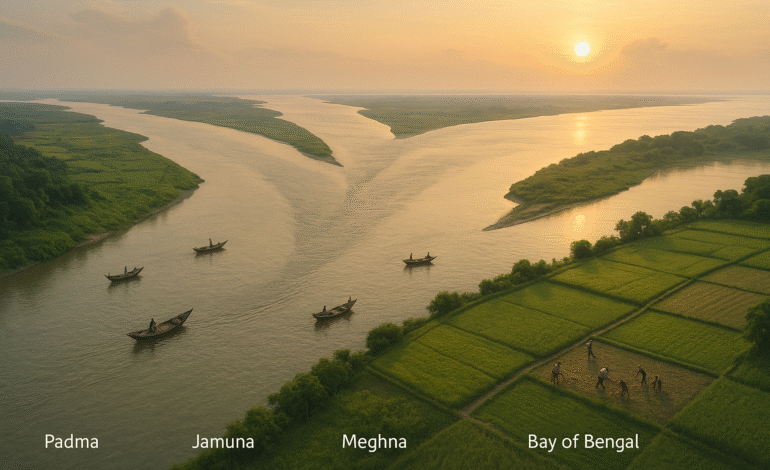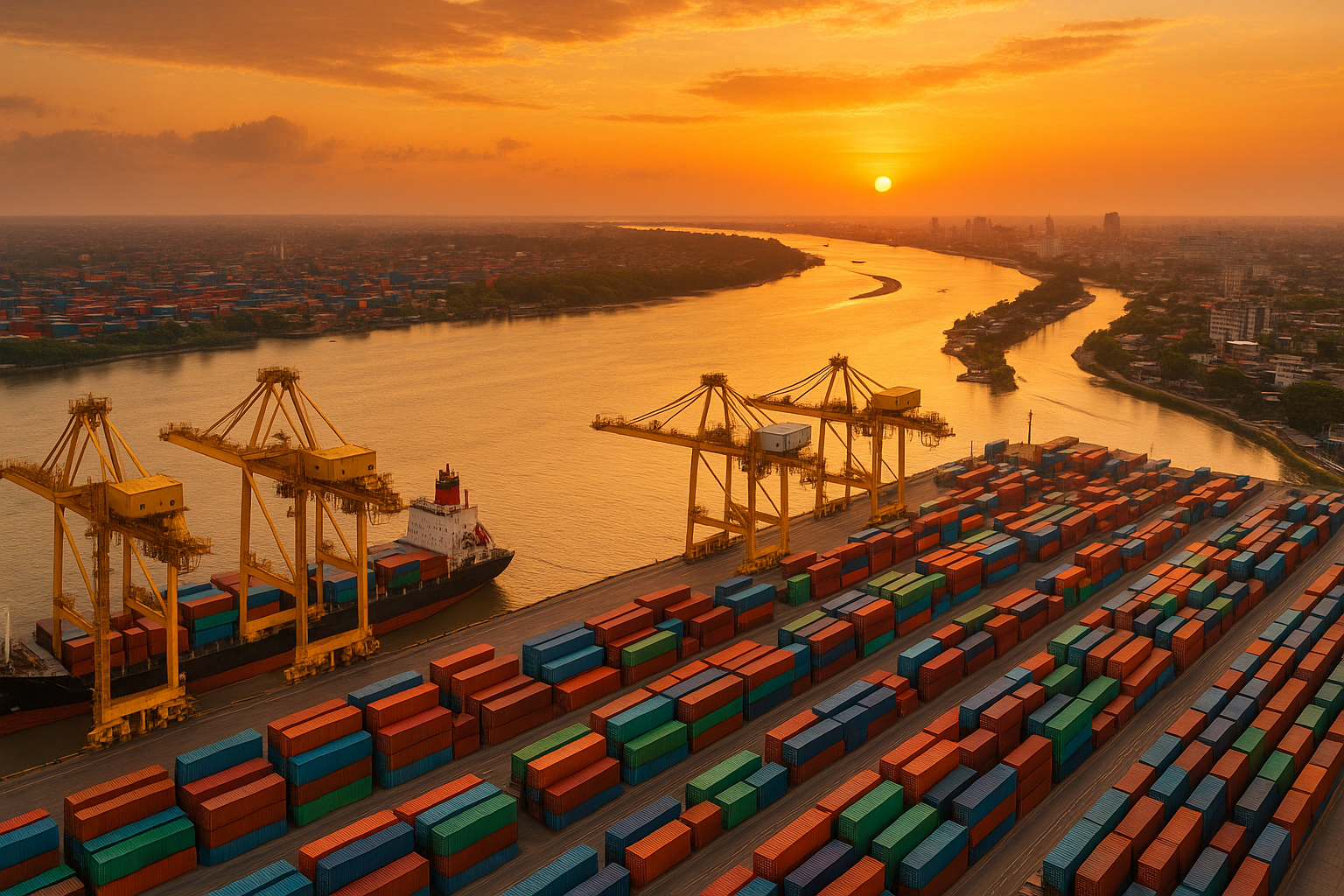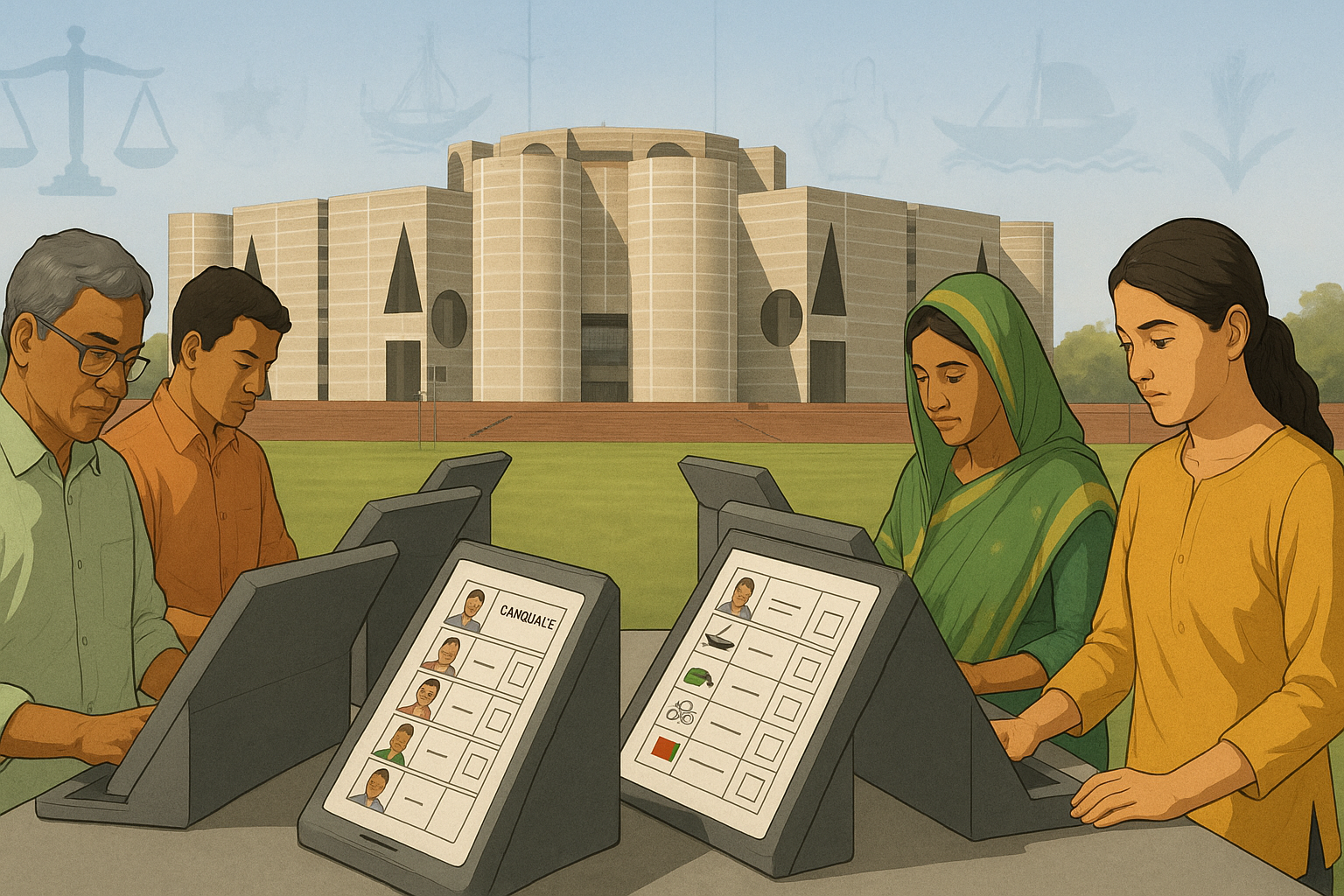Rivers in Bangladesh: The Lifeline of a Nation

Rivers in Bangladesh and Their Deep Connection to Life
Rivers in Bangladesh are not just waterways. They are the lifeblood of the nation. Bangladesh is known as the land of rivers, hosting around 700 rivers and tributaries flowing through its plains. According to the Bangladesh Water Development Board, these rivers cover nearly 24,000 kilometers of waterways, connecting cities, villages, and industries across the country. (bwdb.gov.bd)
From the mighty Padma to the Meghna and Jamuna, the rivers shape the land, feed agriculture, power industries, and nurture culture. They define Bangladesh’s geography and people’s way of life. However, these same rivers also bring floods, erosion, and environmental challenges. Understanding their significance means understanding Bangladesh itself. (unwater.org)
Historical Significance: How Rivers Shaped Bangladesh’s Civilization
Rivers in Bangladesh have played a historic role in the rise of human settlements. Ancient civilizations grew along riverbanks because of fertile soil and easy transport. The Ganges, Brahmaputra, and Meghna systems created the Bengal Delta, the largest delta in the world.
From the Mughal era to British colonial trade routes, rivers served as natural highways. In earlier centuries, towns like Sonargaon, Chandpur, and Barisal flourished because they stood along key river channels. Even Dhaka’s rise as a city in the 17th century was due to its position near the Buriganga River, which supported commerce and navigation. (banglapedia.org)
Today, this deep historical connection remains alive, influencing both culture and economy.
The Lifeline of Agriculture: Rivers Feeding the Land
Agriculture depends on rivers in Bangladesh. Nearly 80 percent of Bangladesh’s farmlands rely on river water either through irrigation or seasonal flooding that enriches soil fertility. The rivers deposit nutrient-rich silt during monsoon, naturally fertilizing farmlands.
The Bangladesh Bureau of Statistics reported that agriculture contributes about 11.3 percent to GDP and employs more than 38 percent of the labor force in 2024. Much of this productivity owes to the country’s river systems. The Padma and Jamuna irrigate rice fields in the central and northern plains, while the Meghna supports fishing and farming in the south.
Without the rivers, Bangladesh’s rice, jute, and fisheries industries would collapse. The delta’s soil fertility and water availability make it one of the most productive agricultural regions in the world. (fao.org)
Economic Value: How Rivers Support Trade and Transport
Rivers in Bangladesh also power its economy. They serve as vital transportation routes for both goods and people. According to the Bangladesh Inland Water Transport Authority (BIWTA), over 20,000 passenger and cargo vessels operate daily on inland waterways.
Nearly 35 percent of the country’s freight is transported through rivers. This system connects rural producers with urban markets and reduces transport costs. The Chittagong and Mongla ports, two of Bangladesh’s trade arteries, are also linked through river networks. (biwta.portal.gov.bd)
Moreover, riverine transport has significant environmental benefits. Compared to road or air transport, river shipping emits less carbon, making it a sustainable option for a developing country like Bangladesh.
Rivers and Fisheries: A Source of Nutrition and Income
The rivers of Bangladesh provide one of the richest freshwater fisheries in the world. More than 60 percent of the country’s fish production comes from inland sources, much of it river-based. The Department of Fisheries reports that fish contributes around 3.5 percent to GDP and supports over 12 million people directly or indirectly. (doF.portal.gov.bd)
Hilsa, the national fish of Bangladesh, thrives in the Meghna and Padma estuaries. It alone accounts for about 12 percent of total fish production. For millions of fishermen and their families, the rivers are both livelihood and tradition.
Cultural Importance: Rivers in Bangladeshi Life and Literature
Beyond economy, rivers are woven into the nation’s identity. Bangladeshi songs, poems, and art are filled with river imagery. Rabindranath Tagore and Kazi Nazrul Islam wrote countless verses celebrating rivers like the Padma and Meghna. Folk songs such as “Amar Sonar Bangla” and “Padma Nadir Majhi” carry emotional ties to the flowing waters.
Cultural festivals, boat races, and riverside fairs are part of rural life. The river also holds spiritual meaning—symbolizing renewal, sustenance, and continuity. It connects generations and communities in both rural and urban Bangladesh.
Environmental Significance: Rivers as Ecological Systems
Rivers in Bangladesh play a critical role in maintaining ecosystems. They support wetlands, floodplains, and mangrove forests like the Sundarbans. These habitats protect biodiversity and act as natural barriers against climate change impacts such as cyclones and storm surges.
The Sundarbans, nourished by the Ganges-Brahmaputra-Meghna system, is home to more than 450 animal species, including the iconic Royal Bengal Tiger. The river flow maintains its delicate salinity balance. Any disruption threatens this world heritage site. (unesco.org)
In short, the rivers are not only sources of life for people but also for countless plant and animal species.
Challenges: Pollution, River Erosion, and Water Conflicts
Despite their importance, rivers in Bangladesh are under severe threat. Pollution is one of the biggest concerns. The Department of Environment found that over 60 percent of industrial waste in Dhaka and Narayanganj flows untreated into rivers. The Buriganga, Shitalakhya, and Turag have become toxic due to dyes, chemicals, and sewage. (doe.portal.gov.bd)
River erosion also affects thousands of families each year. Studies by the Centre for Environmental and Geographic Information Services (CEGIS) estimate that nearly 50,000 hectares of land vanish annually due to erosion, displacing thousands of people.
Transboundary water issues with upstream countries further reduce flow levels in dry seasons. The Ganges Water Treaty with India and other agreements have helped, but climate change now intensifies these challenges.
Government Initiatives and Restoration Efforts
The government has launched multiple programs to protect and restore rivers. Projects under the Bangladesh Delta Plan 2100 aim to ensure sustainable management of water resources through dredging, embankment strengthening, and pollution control. (plandiv.gov.bd)
The National River Conservation Commission (NRCC) works to identify and recover encroached riverbanks. It has already listed more than 48,000 illegal encroachments for removal. The government is also promoting eco-friendly transport and wastewater treatment plants to reduce industrial pollution.
Such initiatives show growing recognition of how essential rivers are to the nation’s future.
Future Prospects: Building a River-Based Economy
Looking ahead, rivers can be central to Bangladesh’s green and blue economy. Reviving river transport can ease traffic congestion, boost trade, and reduce emissions. Eco-tourism along rivers such as the Jamuna and Meghna can create local jobs.
Developing river dredging projects, floating agriculture, and renewable hydropower can strengthen resilience against climate change. Bangladesh’s position as a delta nation gives it natural potential to build a sustainable, river-centered development model.
If managed wisely, the rivers that have sustained Bangladesh for centuries can continue to do so for generations to come.
Rivers Are the Pulse of Bangladesh
Rivers in Bangladesh are not just natural resources—they are part of the nation’s heart and soul. They shape the land, feed the people, and define culture. The economy, environment, and daily life all flow with their rhythm.
Protecting these rivers is not an environmental issue alone; it is an issue of survival. With the right policies and awareness, Bangladesh can transform its rivers from sources of challenge into engines of sustainable prosperity.
The rivers gave Bangladesh its life. It is now Bangladesh’s duty to give life back to its rivers.







